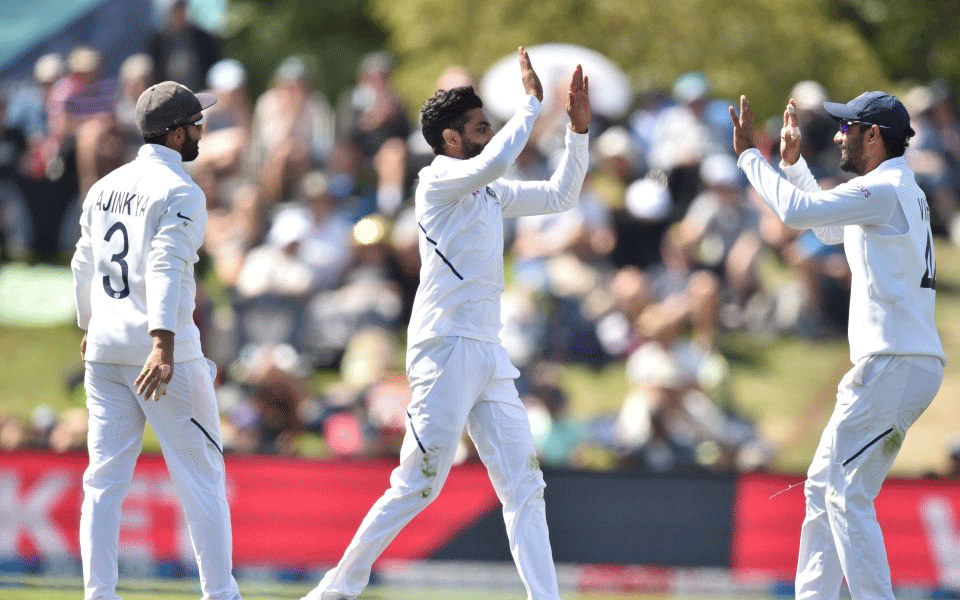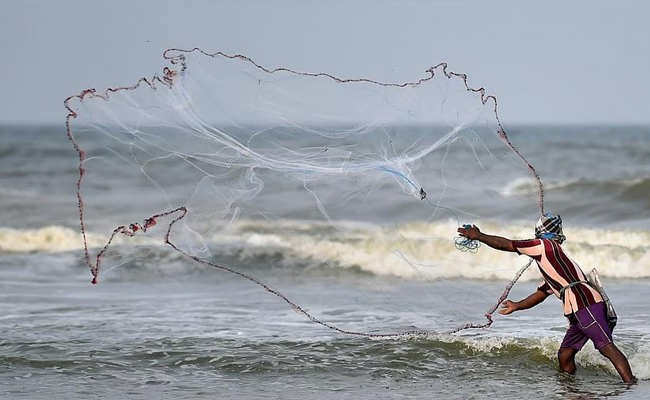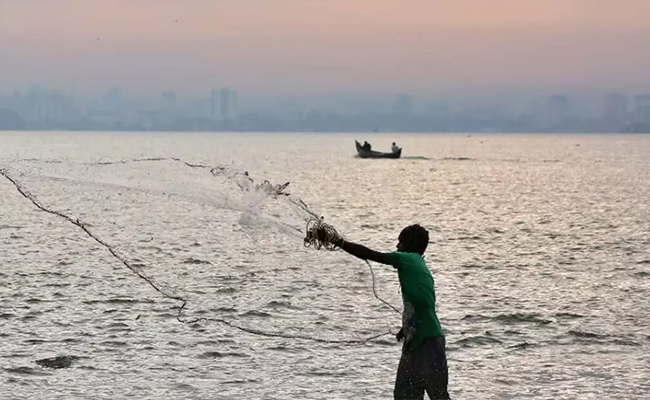Christchurch: The deadly combination of Mohammed Shami and Jasprit Bumrah brought India back in the second Test match, dismissing New Zealand for 235 at tea on day two of the second Test here on Sunday.
Shami (4/81 in 23.1 overs) and Bumrah (3/62 in 22 overs) were brilliant throughout the second day and also got good support from Ravindra Jadeja (2/22 in 10 overs) as India now enjoy a slender seven-run lead.
The visitors had scored 242 in their first innings.
Jadeja took a stunning one-handed airborne catch at deep mid-wicket to end the useful ninth wicket partnership of 51 runs between Kyle Jamieson (49) and Neil Wagner (21) at the stroke of tea.
The New Zealand tail wagged once again and stopped India from having at least a 50-run lead.
Just like the first session, India got five in the second session as Bumrah quickly removed BJ Watling (0) and Tim Southee (0) just after lunch.
Colin de Grandhomme then got a classical left-arm orthodox delivery from Jadeja which pitched on middle and spun away enough to dislodge off-stump.
Wagner and Jamieson then defied the Indian bowlers for nearly 12 overs before a moment of inspiration from Jadeja saw the end of Wagner and Jamieson fell a run short of his maiden Test half-century.
For New Zealand, Tom Latham (52 off 122 balls) scored a gritty half-century but never looked settled since the start of the morning session as Bumrah beat him on multiple occasions.
The pace trio hit the right length from the start with Yadav removing Tom Blundell (30 off 77 balls) with one that came back in with the angle as the bowler went slightly wide off crease.
Bumrah, who was deadly since morning, then removed Kane Williamson (3). The New Zealand skipper was caught in two minds to a delivery that jagged back and took the outside edge when he went for a half-hearted jab.
Ross Taylor (15) lost his patience and stepped out to hit Jadeja against the turn and the ball ballooned towards backward point with Yadav taking a well-judged catch.
Shami, who has been off-colour in this tour so far, was finally back in the mix when he deceived Latham with a classic.
The left-hander was prodding to the away going deliveries and the wily speedster got one to move in. The opener shouldered his arms, not factoring in the late movement which disturbed the stumps.
Shami then got the jittery Henry Nicholls (14) with a delivery that bounced a shade more and the thick edge was taken superbly by a diving Virat Kohli at second slip.
Let the Truth be known. If you read VB and like VB, please be a VB Supporter and Help us deliver the Truth to one and all.
Bengaluru: Artificial Intelligence is slowly changing the way music and creativity are produced in the Kannada film industry, raising concerns among musicians, singers and technicians, The New Indian Express reported on Sunday.
Music composer, actor and director V Manohar reportedly said, AI is being used to write lyrics, especially in low-budget movies. Once lyrics are generated, AI can suggest thousands of tunes. It even asks whether the voice should be male or female. With one click, a complete song is ready.
“If this continues, singers and musicians will have less or no work in the coming days. But it may not succeed either. A few years ago, dubbing was allowed and people could watch movies in any language they preferred. But not many took to it as they wanted to watch a movie in the original,” TNIE quoted him as saying.
According to the report, Filmmaker Avinash U Shetty, a National Award winner, said resistance to new technology is not new. Those who resisted shifting from analogue to digital films years ago have now embraced it. The industry is now using only 10% of the AI potential. If it is scaled up, it can do unimaginable things. What we consider bad now, may not be after five years.
Highlighting the cost advantage, Sangamesh, an independent creator reportedly said, he made a three-minute video using AI for just Rs 4,500. Earlier, the same work would have cost nearly Rs 15 lakh. I finished the entire project in three days. The only expense was the AI software subscription, he said.
These days, it has become difficult to differentiate between the real and AI. AI is creating artistes. Scenes like war, big fights and dance can be shot with a lesser number of artistes. Then with the aid of visual effects and AI, you can achieve what you have in mind, he said.
Actor-director D P Raghuram felt that while AI has made an impact on music, it lacks emotional depth. Cinema earlier involved hard work and strong emotional connections. AI can help improve our work, but creativity should remain human, he reportedly said.
As per the report, earlier, Kannada cinema employed hundreds of junior artistes, who not only earned wages but also shared meals on sets and formed lasting bonds with stars like Dr Rajkumar, Vishnuvardhan and Ambareesh. Today, filmmakers fear that increasing dependence on AI could reduce such human connections, turning creativity into just another automated process.





